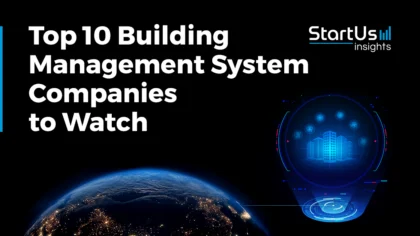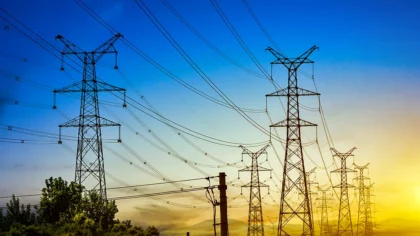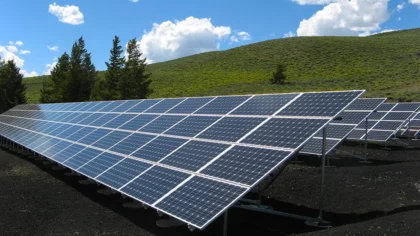The utility sector is undergoing a major shift through the integration of technologies like 3D printing, AI, augmented reality (AR) & virtual reality (VR), big data and analytics, connectivity technologies, the internet of things (IoT), and more. These utility technologies tackle key challenges such as supply chain disruptions, infrastructure inefficiencies, and high costs. 3D printing improves parts production, while AI optimizes grid management. AR & VR provides quality training and infrastructure management. For instance AVUS maps and visualizes distribution networks in AR to offer detailed insights into underground infrastructure like pipes and cables.
Big data & analytics are also crucial for energy management. Further, blockchain offers transparency in energy trading, billing and payments, and carbon credit trading transactions. Connectivity technologies improve grid reliability, IoT optimizes resources and robotics increases safety and maintenance. Adopting these technologies is crucial for innovation managers, product developers, and business leaders to improve efficiency, sustainability, and resilience in the utility sector.
Why should you read this report?
- Gain insights into the top 10 technologies impacting utilities.
- Learn about three practical use cases for each technology.
- Meet 10 innovative startups advancing these technologies.
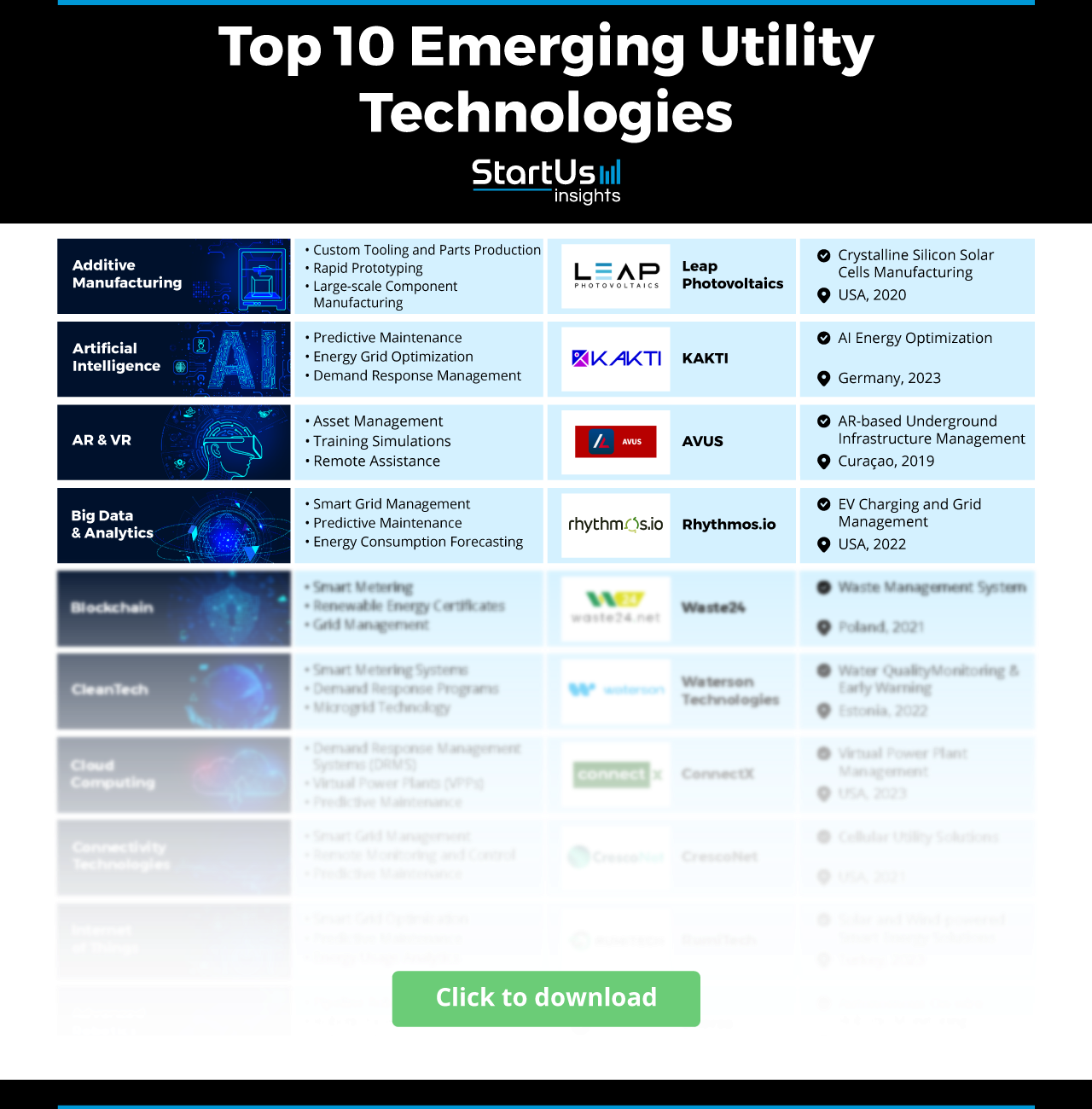
Key Takeaways
- Additive Manufacturing
- Use Cases:
- Custom Tooling and Parts Production
- Rapid Prototyping
- Large-scale Component Manufacturing
- Startup to Watch: Leap Photovoltaics
- Use Cases:
- Artificial Intelligence (AI)
- Use Cases:
- Predictive Maintenance
- Energy Grid Optimization
- Demand Response Management
- Startup to Watch: KAKTI
- Use Cases:
- Augmented Reality (AR) & Virtual Reality (VR)
- Use Cases:
- Asset Management
- Training Simulations
- Remote Assistance
- Startup to Watch: AVUS
- Use Cases:
- Big Data & Analytics
- Use Cases:
- Smart Grid Management
- Predictive Maintenance
- Energy Consumption Forecasting
- Startup to Watch: Rhythmos.io
- Use Cases:
- Blockchain
- Use Cases:
- Smart Metering
- Renewable Energy Certificates
- Grid Management
- Startup to Watch: Waste24
- Use Cases:
- CleanTech
- Use Cases:
- Smart Metering Systems
- Demand Response Programs
- Microgrid Technology
- Startup to Watch: Waterson Technologies
- Use Cases:
- Cloud Computing
- Use Cases:
- Demand Response Management Systems (DRMS)
- Virtual Power Plants (VPPs)
- Predictive Maintenance
- Startup to Watch: ConnectX
- Use Cases:
- Connectivity Technologies
- Use Cases:
- Smart Grid Management
- Remote Monitoring and Control
- Predictive Maintenance
- Startup to Watch: CrescoNet
- Use Cases:
- Internet of Things (IoT)
- Use Cases:
- Smart Grid Optimization
- Predictive Maintenance
- Energy Usage Analytics
- Startup to Watch: RumiTech
- Use Cases:
- Advanced Robotics
- Use Cases:
- Pipeline Robots
- Robotic Exoskeletons
- Robotic Cleaning Systems
- Startup to Watch: Enerza
- Use Cases:
- Additive Manufacturing
Utilities Industry FAQs
What is the utility industry?
The utilities industry includes companies that provide essential services such as electricity, gas, water, and sewage. These services are critical for residential and commercial operations to ensure the functioning of daily life and business activities.
How big is the utilities industry?
The global utilities industry is substantial, with ongoing investments in renewable energy and infrastructure upgrades pushing its value into the trillions of dollars. The market size is expected to grow to USD 8833.3 billion in 2028 at a CAGR of 6.4%. The industry is experiencing growth in electrification, driven by the transition to cleaner energy sources like solar and wind power, as well as the electrification of transportation and heating systems.
What are the challenges the utility industry is facing today?
The utilities industry faces several challenges. Decarbonization and the push towards net-zero emissions require significant investment in infrastructure and new technologies. Aging infrastructure presents reliability risks, especially with increasing demand and climate-related stresses, such as extreme weather conditions. The shift to distributed energy resources and the integration of digital technologies, including AI and smart grids, adds complexity to managing the energy supply while keeping it affordable and reliable.
How We Identify Emerging Technologies & Startups
The data in this report originates from StartUs Insights’ Discovery Platform, covering 4.7 million global startups, scaleups, and technology companies, alongside 20,000 emerging technology trends. Our platform makes startup and technology scouting, trend intelligence, and patent searches more efficient by providing deep insights into the technological ecosystem. Utilizing the trend intelligence feature, we analyze industry-specific technologies for this report, detect patterns and trends, and identify use cases along with the startups advancing these areas. Further details and capabilities are accessible via the website.
10 Emerging Technologies Impacting the Future of Utility [2025 & Beyond]
1. Additive Manufacturing

3D printing is solving common industry challenges such as supply chain bottlenecks, aging infrastructure, and high repair costs. Through technologies like fused deposition modeling (FDM), stereolithography (SLA), and selective laser sintering (SLS), utility companies rapidly produce customized parts including pipe fittings, insulators, and turbine components. Digital light processing (DLP) allows for the creation of intricate, high-precision components used in grid systems and water treatment plants. Whereas, continuous filament fabrication (CFF) ensures that these parts withstand extreme conditions, such as high pressure or corrosion. This strategic integration of 3D printing helps utilities enhance operational resilience, lower maintenance costs, and maintain uninterrupted service delivery.
3 Practical Use Cases of 3D Printing in Utility
- Custom Tooling and Parts Production: 3D printing is used for the on-demand production of tailored tools and replacement parts for infrastructure maintenance and equipment repairs. This reduces lead times and dependency on external suppliers by allowing quick production and replacement of parts as needed.
- Rapid Prototyping for Infrastructure: Stereolithography and digital light processing accelerate the development and testing of prototypes for sensor housings and turbine blades. It identifies and resolves potential issues before full-scale production.
- Large-Scale Component Manufacturing: Binder jetting and multi-material technologies create large and complex parts to improve the infrastructure’s performance and cost-effectiveness.
Startup to Watch: Leap Photovoltaics
US-based startup Leap Photovoltaics develops additive manufacturing process for crystalline silicon solar cells. It replaces conventional silicon wafer production with a thin printed monocrystalline silicon layer. The company’s process integrates high-performance materials into a scalable printing approach that maintains energy conversion efficiency and durability. Leap Photovoltaics delivers photovoltaic solutions with lower production costs and supply resilience to ensure sustainable solar energy deployment.
2. Artificial Intelligence

Predictive maintenance algorithms analyze equipment data, forecast failures, and prevent costly downtimes. Grid management benefits from AI-driven optimization tools that balance supply and demand by predicting energy needs and improving the integration of renewable sources. AI-powered energy management systems encourage real-time decision-making for effective energy distribution. Further, virtual power plants integrated with AI aggregate and manage distributed energy resources to stabilize the grid.
3 Practical Use Cases of Artificial Intelligence in Utility
- Predictive Maintenance: AI tools analyze equipment data to forecast potential failures and schedule proactive repairs. This minimizes unexpected downtimes and extends equipment lifespan.
- Energy Grid Optimization: Machine learning algorithms predict energy demand and adjust supply accordingly to increase grid reliability.
- Demand Response Management: AI-powered systems adjust energy consumption patterns during peak periods to reduce strain on the grid, prevent outages, and lower energy costs.
Startup to Watch: KAKTI
German startup KAKTI develops an AI-driven energy optimization tool to improve the operational efficiency of district energy systems. The operational co-pilot supports the management of energy production and distribution by optimizing power generation, fuel mix, and renewable energy integration. It enhances production planning through AI optimization and focuses on efficiency and sustainability. The startup’s solution also optimizes storage utilization to balance supply and demand for more effective operations. Further, KAKTI’s algorithms identify energy management efficiencies and deliver cost savings, while its optimization strategies reduce emissions to promote cleaner and more sustainable district energy systems.
3. Augmented Reality & Virtual Reality

AR systems, such as Microsoft HoloLens 2, enable real-time visualization of complex utility grids, pipelines, and power stations, improving maintenance and asset management of infrastructure. AR-enabled smart glasses allow utility field workers to access hands-free, step-by-step repair guidance while collaborating remotely with offsite experts, reducing downtime during critical repairs. VR platforms like PTC’s Vuforia Engine enhance workforce training by creating immersive, real-world simulations for tasks such as grid repair and equipment handling, improving safety and technical proficiency. Additionally, AR-based digital twins offer predictive maintenance insights for utility networks, allowing for management of assets like transformers and water treatment facilities.
3 Practical Use Cases of AR & VR in Utility
- Asset Management: Field technicians visualize and interact with infrastructure components through AR apps. This technology brings accuracy and efficiency to repairs by providing real-time, contextual information.
- Training Simulations: VR platforms create immersive training environments where utility workers practice responding to emergency scenarios and complex procedures. This simulation-based training improves skills and preparedness without exposing workers to real-world risks.
- Remote Assistance: AR solutions enable experts to provide real-time visual instructions and annotations. Thus, remotely guide on-site technicians while troubleshooting complex equipment or critical infrastructure, such as power lines, substations, and water treatment facilities.
Startup to Watch: AVUS
Curacao-based startup AVUS maps and visualizes distribution networks in AR to provide insights into underground infrastructure such as pipes and cables. It employs a smartphone application combined with a GNSS antenna to deliver precise, centimetric accuracy. The company’s solutions include AVUS AR, which reveals concealed risks and infrastructure, and AVUS As-Built, which captures “As-Is” and “As-Built” records on-site. The businesses view and interact with an overlay of hidden networks through AR for better planning and management of utility infrastructure.
4. Big Data & Analytics

Big data and analytics enable utilities to process large amounts of data from sources like smart meters, sensors, and grid systems and convert raw data into actionable insights. Predictive analytics allows for anticipating equipment failures and reducing maintenance costs, while real-time data analysis improves grid stability and energy distribution. Further, these analytics tools offer visibility into assets for the management of infrastructure and ensuring sustainable operations.
3 Practical Use Cases of Big Data & Analytics in Utility
- Smart Grid Management: Data analytics optimize grid performance by balancing supply and demand in real time. This technology uses data from various sources to prevent outages and ensure efficient energy distribution.
- Predictive Maintenance: Machine learning models analyze sensor data to forecast equipment failures before they occur. Predicting maintenance needs enables scheduling repairs proactively to minimize downtime and reduce costs.
- Energy Consumption Forecasting: Predictive analytics tools forecast energy usage patterns to align supply with anticipated demand to reduce waste and improve reliability.
Startup to Watch: Rhythmos.io
US-based startup Rhythmos.io provides the Cadency EdgeAI platform that uses AI, power system engineering, and machine learning-driven analytics to offer insights into the impact of EV loads on the distribution grid. It optimizes EV charging and manages critical assets that allow utilities to increase the number of EVs on their existing infrastructure without extensive capacity upgrades. Fleet managers also benefit from optimized charging schedules, deferring utility service level upgrades while reducing energy costs. Rhythmos.io’s technology supports a transition to electric vehicles by minimizing infrastructure investments and maintaining affordable electricity rates.
5. Blockchain

Blockchain’s distributed ledger technology enhances transparency and reduces reliance on intermediaries for utilities to automate transactions through smart contracts. These contracts streamline energy trading and grid management by recording real-time data on energy production, consumption, and pricing. Blockchain also supports the integration of distributed energy resources like solar panels and wind farms to create more flexible and resilient grid systems. Technologies like peer-to-peer energy trading platforms and blockchain-based metering offer utilities control over energy flows, while ensuring the security and immutability of transaction records.
3 Practical Use Cases of Blockchain in Utility
- Smart Metering: The immutable ledger provides security and transparency in recording energy consumption data from smart meters. It reduces confusion and fraud related to billing and ensures accurate energy usage tracking.
- Renewable Energy Certificates: Blockchain aligns the issuance and trading of renewable energy certificates by verifying green energy claims. This simplifies the process of tracking and trading these certificates.
- Grid Management: Blockchain provides accurate data on grid status and performance to allow better energy distribution management.
Startup to Watch: Waste24
Polish startup Waste24 provides a waste management solution that utilizes ultrasonic sensors and communication technologies such as NB-IoT, CAT-M, and LoRaWAN integrated into a blockchain-based system. This technology allows precise monitoring of waste container levels and triggers automatic orders for waste collection through smart contracts. The system’s key features include real-time tracking via geolocation, automated planning and task assignment for field operations, and integration with waste databases for reporting. Waste24’s solution simplifies waste management and reduces costs for municipal and commercial clients.
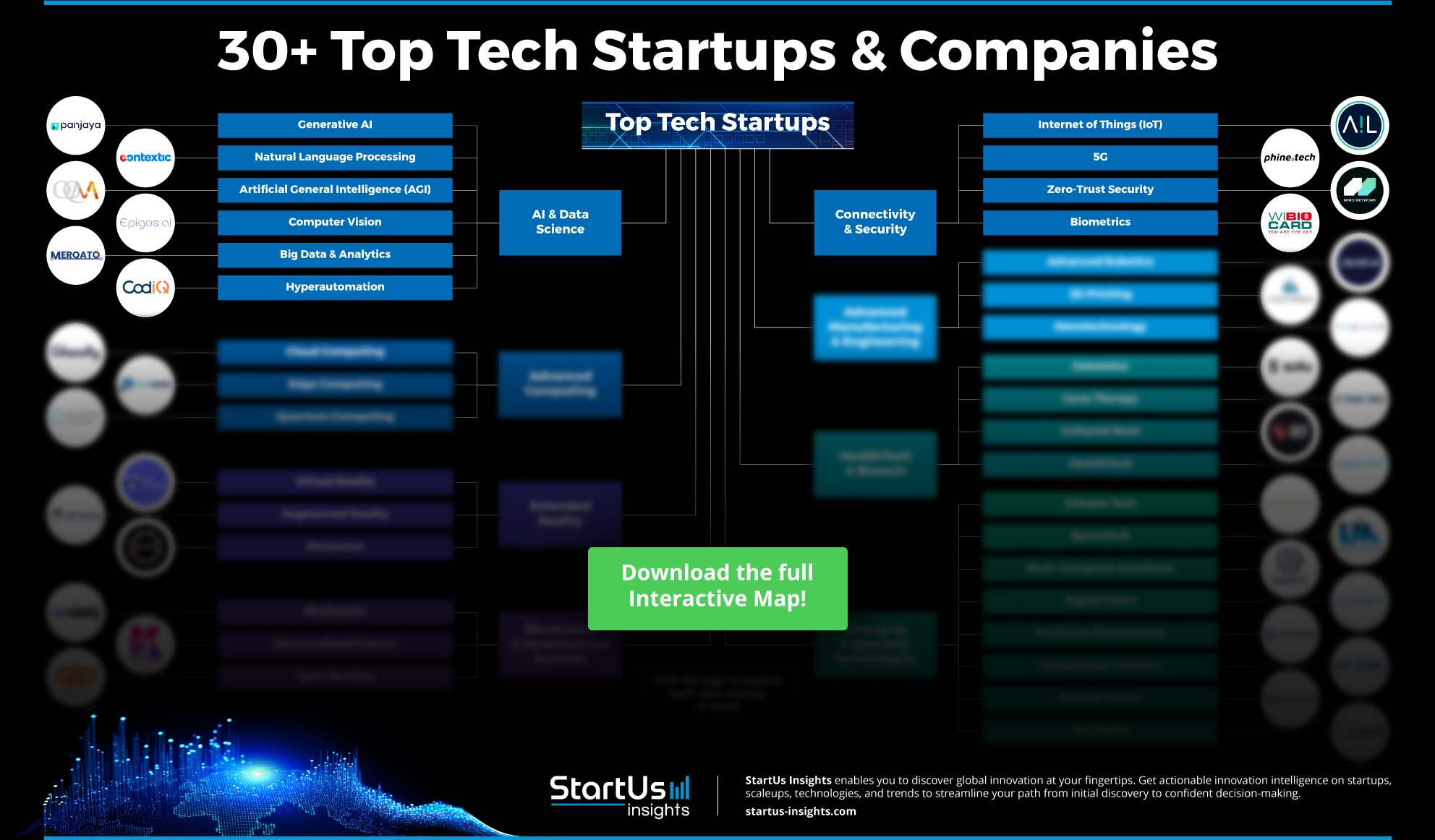
6. CleanTech

Solar photovoltaic (PV) systems lower reliance on fossil fuels and reduce greenhouse gas emissions. Wind turbines use renewable energy for grid efficiency which stabilizes the energy supply by providing a consistent source of clean power. Smart grid technologies optimize energy distribution and consumption by reducing operational costs and increasing system resilience. Further, energy storage solutions, such as flow batteries manage energy supply and demand. Hydrogen fuel cells also offer a clean alternative for energy storage and generation which further reduces carbon emissions.
3 Practical Use Cases of CleanTech in Utility
- Smart Metering Systems: Provide real-time data on energy usage that offers precise billing and improves demand response strategies.
- Demand Response Programs: Adjust energy consumption based on supply availability to reduce peak loads and prevent grid overloads.
- Microgrid Technology: Supports localized energy production and distribution to maintain power during outages and integrates renewable energy sources.
Startup to Watch: Waterson Technologies
Estonian startup Waterson Technologies provides real-time, AI-powered water quality monitoring and early warning software. The company utilizes AI to assess the likelihood of biological contamination. It analyzes data from existing physicochemical sensors rather than traditional laboratory testing. AI algorithm generates estimates of contamination risks and presents the results through an interface via integrating data cleaning and merging processes. Waterson Technologies offers continuous monitoring that is compatible with SCADA systems.
7. Cloud Computing

Data management, operational efficiency, and system resilience are some of the major challenges that cloud computing technologies are mitigating in the utility sector. Advanced metering infrastructure (AMI) uses cloud-based platforms to collect and analyze real-time data. Edge computing processes data closer to where it is generated which makes operation efficient and accelerates decision-making. Grid digital twins which are powered by cloud infrastructure allow better grid management. Besides, IoT integration with cloud platforms offers hassle-free monitoring and automated control of utility systems.
3 Practical Use Cases of Cloud Computing in Utility
- Demand Response Management Systems (DRMS): Cloud-based DRMS analyzes grid load to improve energy consumption and adjust demand in real time. This improves the stability of the grid and reduces peak load strain by controlling energy distribution across the network.
- Virtual Power Plants (VPPs): VPPs use cloud technology to aggregate distributed energy resources like solar panels and batteries into a single virtual energy source. This improves grid flexibility and improves energy distribution.
- Predictive Maintenance: Cloud platforms analyze sensor data from transformers and substations to predict equipment failures. The early detection reduces downtime and ensures uninterrupted service.
Startup to Watch: ConnectX
US-based startup ConnectX builds an OEM-agnostic cloud platform integrating distributed energy resources (DERs) into utilities’ virtual power plants (VPPs). Its ConnTrol-OS, an operating system autonomously manages energy flows by processing real-time data from diverse grid parameters, energy devices, and market signals. It aggregates consumer-side assets like solar panels, EV chargers, and thermostats to coordinate and optimize energy distribution and improve grid performance.
8. Connectivity Technologies

5G enables utilities to manage large amounts of data from smart grids and IoT devices to improve grid reliability and operational efficiency. LoRaWAN supports this by offering long-range, low-power communication for remote monitoring in difficult-to-access areas, making it suitable for smart metering and energy management. Wi-Fi, typically used for local area communication, continues to connect smart devices within facilities. Further, Ethernet provides secure and fast connectivity for high-bandwidth industrial applications, linking critical utility infrastructure with control centers.
3 Practical Use Cases of Connectivity Technologies in Utility
- Predictive Maintenance: Connectivity tech facilitates real-time data transmission from sensors monitoring equipment performance to allow early detection of potential failures and optimize maintenance schedules.
- Smart Grid Management: 5G offers faster and more reliable communication between distributed grid components to monitor and balance energy supply and demand, optimize grid performance, and quickly respond to system anomalies.
- Remote Monitoring and Control: Edge computing processes data locally at substations and power plants. It cuts down on data transfer time, allowing for faster responses to issues and improving system reliability.
Startup to Watch: CrescoNet
US-based startup CrescoNet provides cellular utility solutions by integrating private and public LTE networks to improve utility operations. Its technology allows utilities to update and manage advanced metering infrastructure (AMI), power distribution, demand response, and renewable energy integration. It offers flexible, scalable, and pay-as-you-go models to deliver secure connectivity, data analytics, and network-as-a-service, allowing utilities to optimize operations and reduce costs. CrescoNet’s solutions enable utilities to modernize infrastructure and support a sustainable energy future through enhanced security, scalability, and vendor-agnostic integration.
9. Internet of Things

Smart meters provide real-time data on energy consumption for precise load management and to reduce energy losses. Deployment of sensor networks across infrastructure continuously monitors equipment health and performance to prevent outages. Automated grid management systems use IoT data to optimize operations, balance loads, and improve reliability. Further, leak detection sensors installed in water and gas distribution systems identify leaks early to reduce waste and prevent infrastructure damage. These IoT solutions support sustainability and improve resource efficiency.
3 Practical Use Cases of the Internet of Things in Utility
- Smart Grid Optimization: Smart grids use IoT data to monitor and control energy distribution in real time. This technology balances loads and responds quickly to grid conditions which cuts outages and lowers operational costs.
- Predictive Maintenance: IoT-enabled systems monitor equipment conditions to identify potential failures, prevent unexpected breakdowns, extend equipment life, and reduce maintenance costs.
- Energy Usage Analytics: IoT platforms analyze data from smart meters to offer insights into energy consumption patterns. This provides better demand forecasting and supports personalized energy management.
Startup to Watch: RumiTech
Turkish startup RumiTech builds solar and wind-powered smart poles that provide off-grid energy solutions. Its poles use renewable energy to power systems like smart lighting, cameras, weather stations, and emergency buttons, while offering remote management through integrated 4G and 5G connectivity. The poles withstand various environmental conditions and support integrating existing and new IoT systems. RumiTech’s platform enables energy-efficient and sustainable operations and contributes to decarbonization, democratization, deregulation, decentralization, and digitization across different industries.
10. Advanced Robotics

Technologies like autonomous drones and robotic arms, equipped with sensors such as LiDAR, thermal cameras, and acoustic detectors, monitor, inspect, and repair assets in real time. These systems collect and analyze data continuously which allows utilities to manage assets efficiently and reduce human exposure to hazardous environments. Further, advanced robotic platforms, supported by AI and machine learning, navigate difficult terrains, perform maintenance tasks, and excavate underground utility lines with precision to minimize downtime and enhance productivity.
3 Practical Use Cases of Advanced Robotics in Utility
- Pipeline Robots: Autonomous robots navigate through pipelines to perform inspections and repairs. They reduce operational downtime and maintenance costs by identifying and addressing issues early.
- Robotic Exoskeletons: Wearable robotic exoskeletons assist workers in handling heavy tools and materials. This robotic technology improves the safety and efficiency of workers by reducing their physical strain and injury risk.
- Robotic Cleaning Systems: Robotic systems clean and maintain large-scale solar panels and wind turbines for optimal energy production. These systems reduce maintenance costs and extend the lifespan of renewable energy infrastructure by performing consistent and thorough cleaning.
Startup to Watch: Enerza
US-based startup Enerza improves distribution grid reliability with its autonomous on-wire robotic monitoring system. It deploys a fleet of robots, ARTHER, that navigate overhead distribution lines independently for thorough grid coverage without human intervention. This system integrates on-wire data streams with AI-driven predictive analytics to offer utilities a dashboard to monitor and plan grid maintenance. The company’s unique capability to combine on-wire data with external third-party sources foresee power outages with accuracy, pinpointing potential issues down to the individual pole.
Utilities Industry Outlook
Patents & Grants
The utility industry is transforming due to technological advancements, with over 4200 patents filed and more than 800 grants awarded. The sector’s annual patent growth rate of 2.59% highlights ongoing research and development in energy efficiency, grid modernization, and sustainability.
For more actionable insights, download our free Utility Innovation Report.
Investment Landscape
Investors such as Techstars, Y Combinator, Cleantech Open, and Tiger Global Management, along with the Rajiv Gandhi Innovation Award by the Government of Rajasthan, support the investment landscape. Investment stages include seed rounds, pre-seed rounds, early-stage VC/series A, accelerators/incubators, and angel funding, creating an ecosystem for technological solutions in the global utility sector.
Global Footprint
Key innovation hubs include the USA, India, the UK, Canada, and Australia, with major cities like London, Melbourne, Houston, New York City, and Dubai serving as centers for startup activity.
Don’t Miss Out on the Latest Innovation in Utilities Industry
Ready to leverage the latest utility technologies shaping the future? With StartUs Insights, you gain quick and easy access to over 4.7 million startups, scaleups, and tech companies, along with 20,000 emerging technologies and trends. Our AI-powered search and real-time database provide exclusive solutions that set you apart from the competition.
Industry giants like Samsung, Nestlé, and Magna trust our innovation intelligence tools to lead trends, optimize operations, and uncover new market opportunities. “Through collaborating with StartUs Insights, we discovered new startups for pilot projects and are able to find & test new ideas that help us to improve and generate new business opportunities,” says Oscar Cantalejo, Startup Program Manager at Iberdrola.
Like them, benefit from our unmatched data, comprehensive industry views, and reliable insights to drive strategic decision-making. Get in touch to learn how our tailored discovery options can accelerate your innovation journey.
Discover All Emerging Utility Technologies & Startups
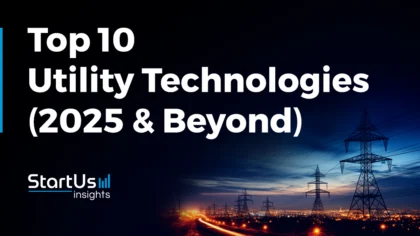
![Dive into the Top 10 Utilities Industry Trends & Innovations [2025]](https://www.startus-insights.com/wp-content/uploads/2025/04/Utilities-Industry-Trends-SharedImg-StartUs-Insights-noresize-420x236.webp)
![Dive into the Top 10 Water Management Trends & Innovations [2025]](https://www.startus-insights.com/wp-content/uploads/2025/04/Water-Management-Trends-SharedImg-StartUs-Insights-noresize-420x236.webp)
